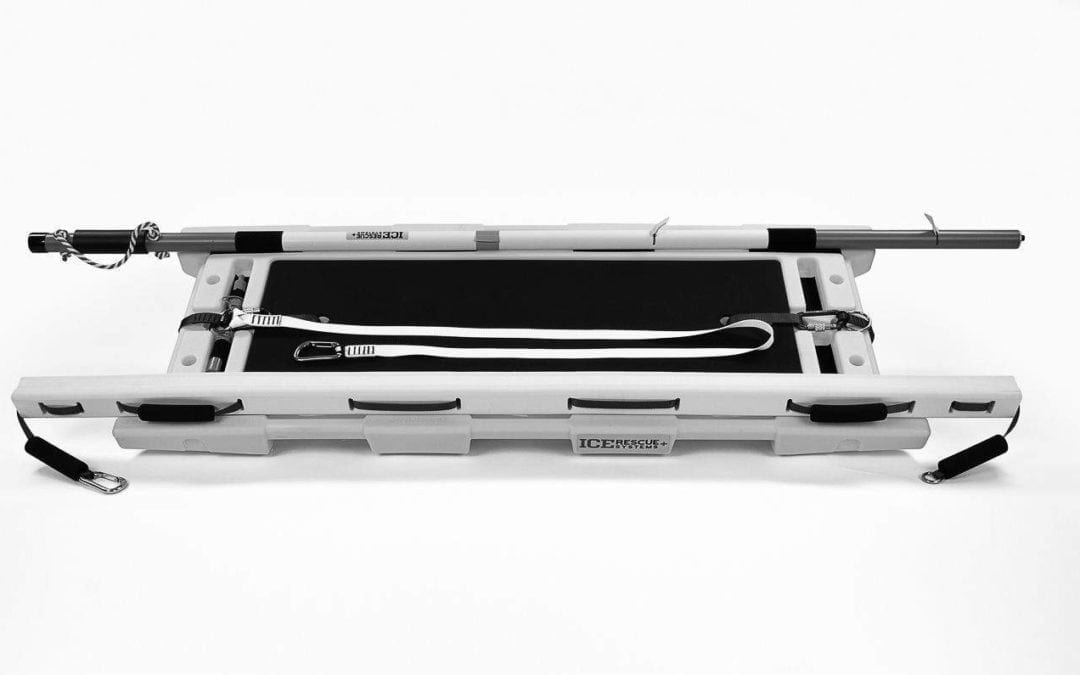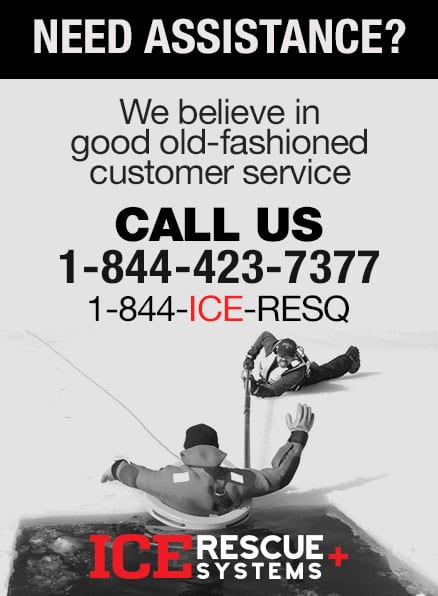What are the features you should look for when considering an ice rescue sled? Departments and public safety personnel often ask this question. Let’s evaluate the perfect ice rescue device and what should be considered before purchasing.
#1 – Your ice rescue sled or device should be easy to deploy and should only require ONE rescuer to operate. One rescuer is all that is needed for a short distance rescue. Understand, the goal is to minimize potential risk to our rescuers; the fewer personnel, we put into the hazard zone, the better. The most important considerations is rescuer safety, always! Some teams will deploy inflatable boats, which typically require several rescue personnel to propel the craft out to the victim. This rescue method has put added weight on an already fragile ice situation. It is recommended that any rescuer, planning to make an ice rescue, be in top notch physical condition; considering water and ice are like an 800-pound gorilla.
#2 – The safety and durability of the device. In almost all instances when you’ve been called out to an ice rescue operation, the condition of the ice is not going to be smooth hockey rink ice. The ice conditions will most likely be fragile, weak, jagged and sharp edges that are exposed specifically where the person or animal has broken through the ice. The ice rescue sled needs to be puncture resistant and have design features built in that will allow the device to seamlessly go from open water to ice, with minimal effort from the rescue.The ice rescue sled should be able to accommodate all the tools that the rescue technician may need during the rescue.
#3- You must have a device that is buoyant, comfortable and equipped with hand holds. Buoyancy is critical, not only for you the rescuer, but also the victim that you are extricating from icy cold water. Remember the device will be utilized by both rescuer and patient, so the device should provide a level of comfort. Your sled should have padding and hand holds for the victim. Your device should be equipped with attachment points for a buoyancy device such as the Rescube sling or tube to aid in buoyancy for the victim.
#4- Your ice rescue transport sled needs to be ready for deployment at a moment’s notice. Yes, it needs to be 100% ready for immediate rescue deployment. When called out to a surface ice rescue operation, time is of the essence and you don’t have time to assemble or inflate a device. Rescue is about time!
#5- Your ice rescue sled or device should be light weight and easily transported to the scene of the rescue. It should not be large or cumbersome. It should be user friendly with color coded features to help assist in lessening the potential confusion with different set up methodologies, i.e. direct ingress or in haul – out haul system set up.
#6- You must also consider storing and transporting your ice rescue sled on the response apparatus. What compartment will be utilized? Will it be stored above or in a side door? The device should be apparatus, friendly. Most likely the device will be stored vertically and the ends should be squared off for stability when standing up. It should be less than 65” tall and less than 28” wide. Working within these measurements, the device will typically be able to be stored in many compartments with various rescue response vehicles.
#7- The perfect ice rescue transport sled needs to work in real-life conditions and situations. It must have a low profile. Real world conditions typically consist of windy conditions. When winds are present we must be low to the ground, with our weight dispersed and our center of gravity spread over the icy surface.
Conclusion – As you consider an ice rescue sled or device you should always look for equipment that has been constructed for you, the rescuer, and the victims you are planning to rescue. Your choice for an ice rescue sled should provide not only safety, but comfort and be rescuer friendly. Your sled should have features that accommodate a victim that has been in harsh icy cold water conditions, a victim that may have compromised health conditions and possibly hypothermic. Your sled should have padding and hand holds for the victim and be equipped with attachment points to accommodate a victim buoyancy device such as the Rescube sling. Your ice rescue sled or device should be low profile for windy weather conditions and provide a low center of gravity for body weight disbursement on weak fragile ice. Always remember, rescuer safety is the #1 priority!


